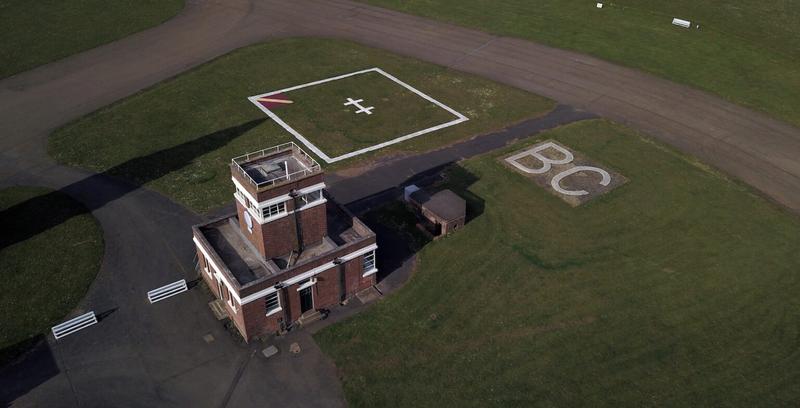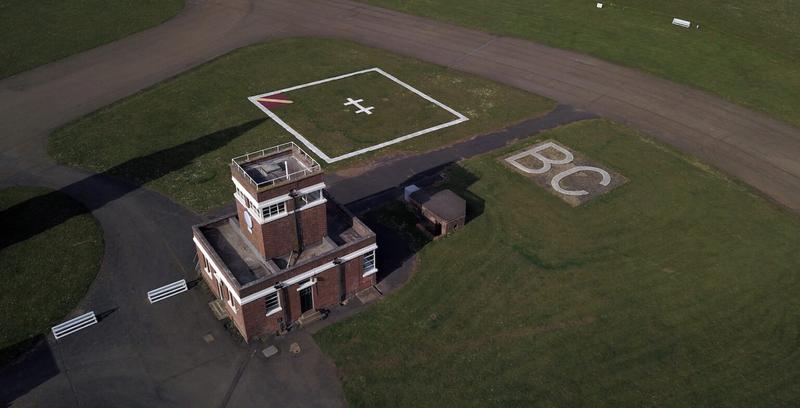
Government Culture Recovery Fund granted for Bicester Heritage Watch Office Restoration
Bicester Heritage has been awarded a £25,000 grant for essential construction work to Building 109, known as ‘The Watch Office’. This rare and important building is located at the heart of the former RAF Bicester aerodrome and stands as an active monument to the location’s rich aviation history.
A Grade II Listed building, it is one of just three surviving brick-built RAF Watch Offices in the UK and is located at the end of the Main Drive through the Technical Site from the Main Gate and Guard House. Showcasing development on flying fields in the mid 1930s it represents the finest example of a Military Watch Office in the UK. At the beginning of World War II, the duty pilot would be stationed in the Office, logging aviation activity as aircraft flew from the grass airstrips in front of the building. As the skies grew busier, it became necessary to increase the number air traffic or operations (‘Ops’) personnel in the building, allowing the Watch Office to play a key role in the Royal Air Force’s activities from the aerodrome.
The Watch Office has strong Art Deco characteristics, notably in the vast ground floor window which overlooks the grass airfield, echoing the fenestration of the vast flanking C Type hangars which envelop the Watch Office.
The grant from Historic England will help fund repairs to the Watch Office’s concrete roof structure, brickwork, coping stones and concrete sills. It is the latest grant from Historic England to contribute to the protection of key historic structures at Bicester Heritage. In 2016, a significant joint venture was undertaken by Bicester Heritage and Historic England to delicately preserve the surviving defensive structures of RAF Bicester, now protected as Scheduled Ancient Monuments.
Lifeline grants from the Culture Recovery Fund are designed to protect heritage sites and ensure that jobs and access to culture and heritage in local communities are protected for the months ahead.
Culture Secretary, Oliver Dowden, said: “These grants will help the places that have shaped our skylines for hundreds of years and that continue to define culture in our towns and cities. We’re protecting heritage and culture in every corner of the country to save jobs and ensure it’s there for future generations to enjoy.”
Daniel Geoghegan, CEO of Bicester Motion said: “The Watch Office is not only an iconic emblem of pre-war RAF stations offering an unparalleled vantage point across the airfield, but also a rare survivor. The support and professionalism of Historic England has contributed significantly to success in previous projects and we are delighted to have the opportunity to work with them once again in order to breathe life back into this fabulous, landmark building.”
Duncan Wilson, Historic England Chief Executive said: “Historic places across the country are being supported by the Government’s grants awarded under the Culture Recovery Fund. This funding is a lifeline which is kick-starting essential repairs and maintenance at many of our most precious historic sites, so they can begin to recover from the damaging effects of COVID-19.
“It is also providing employment for skilled craft workers who help keep historic places alive and the wheels of the heritage sector turning. Our shared heritage is an anchor for us all in these challenging times and this funding will help to ensure it remains part of our collective future.”
Bristol Blenheim Bombers fly over Hangar 113 and The Watch Office, during WW2 at RAF Bicester.



The membership club that celebrates Bicester Heritage and the people and cars it supports.

